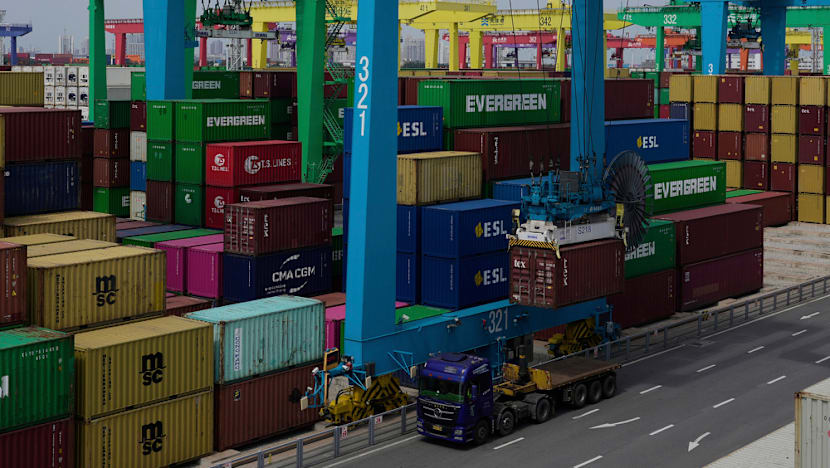World
China’s August Exports Hit Six-Month Low as U.S. Tariff Impact Grows

China’s export growth decelerated to a six-month low in August, reflecting the fading effects of a temporary tariff truce with the United States. Outbound shipments rose by only 4.4 percent year-on-year, according to customs data released on September 8, falling short of the 5 percent increase anticipated in a Reuters poll. This decline marks the slowest growth rate since February, compared to a more robust 7.2 percent increase in July.
Imports also showed disappointing figures, increasing by just 1.3 percent, following a 4.1 percent growth the previous month. Economists had expected a 3.0 percent rise in imports, indicating a broader trend of weakening demand.
Trade Relations Under Pressure
The ongoing trade tensions between the world’s two largest economies have put significant pressure on China’s export-oriented economy. Donald Trump‘s unpredictable trade policies have left policymakers wary of implementing necessary economic reforms. Xu Tianchen, a senior economist at the Economist Intelligence Unit, remarked, “I would say the number is still decent, and the resilience of exports has certainly lasted longer than we had expected.”
On August 11, 2023, the U.S. and China extended their tariff truce for an additional 90 days, maintaining existing levies of 30 percent on Chinese imports and 10 percent duties on U.S. goods. Nevertheless, analysts caution that should tariffs exceed 35 percent, Chinese exporters could face severe challenges.
The recent visit by senior Chinese trade negotiator Li Chenggang to Washington yielded limited progress, underscoring the complexities of navigating these turbulent trade relations.
Shifts in Export Markets
Despite the downturn in exports to the U.S., which fell by 33.1 percent year-on-year in August, there was a notable increase in shipments to Southeast Asia, rising by 22.5 percent. Dan Wang, director for China at Eurasia Group, noted, “Exports are holding up well so far. Shipments to the U.S. are down, but other routes are even better than last year.”
Chinese manufacturers are actively exploring markets in Asia, Africa, and Latin America to mitigate the impact of U.S. tariffs. However, the consumption power of the U.S. market, which previously absorbed over $400 billion of Chinese goods annually, remains unrivaled.
The trade surplus for August stood at $102.3 billion, an increase from $98.24 billion in June but still below June’s figure of $114.7 billion. Analysts are closely monitoring whether Chinese officials will introduce additional fiscal support in the fourth quarter to stimulate domestic demand, as the current economic environment presents numerous challenges.
While Beijing seems hesitant to quickly replenish funds for its “cash-for-clunkers” program, which has recently seen local governments exhaust their allocations, the overall economic outlook remains cautiously optimistic. The resilience shown by manufacturers and their adaptability to shifting global markets will be crucial as China navigates the ongoing trade landscape.
-

 Business5 months ago
Business5 months agoKenvue Dismisses CEO Thibaut Mongon as Strategic Review Advances
-

 Lifestyle4 months ago
Lifestyle4 months agoHumanism Camp Engages 250 Youths in Summer Fest 2025
-

 Sports4 months ago
Sports4 months agoDe Minaur Triumphs at Washington Open After Thrilling Comeback
-

 Sports5 months ago
Sports5 months agoTupou and Daugunu Join First Nations Squad for Lions Clash
-

 Top Stories5 months ago
Top Stories5 months agoColombian Senator Miguel Uribe Shows Signs of Recovery After Attack
-

 World5 months ago
World5 months agoASEAN Gears Up for Historic Joint Meeting of Foreign and Economic Ministers
-

 Health4 months ago
Health4 months agoNew Study Challenges Assumptions About Aging and Inflammation
-

 Business5 months ago
Business5 months agoOil Prices Surge Following New EU Sanctions on Russia
-

 Entertainment4 months ago
Entertainment4 months agoDetaşe-Sabah Violin Ensemble Captivates at Gabala Music Festival
-

 Entertainment4 months ago
Entertainment4 months agoBaku Metro Extends Hours for Justin Timberlake Concert
-

 Top Stories5 months ago
Top Stories5 months agoRethinking Singapore’s F&B Regulations Amid Business Closures
-

 Business5 months ago
Business5 months agoU.S. House Approves Stablecoin Bill, Sends to Trump for Signature









